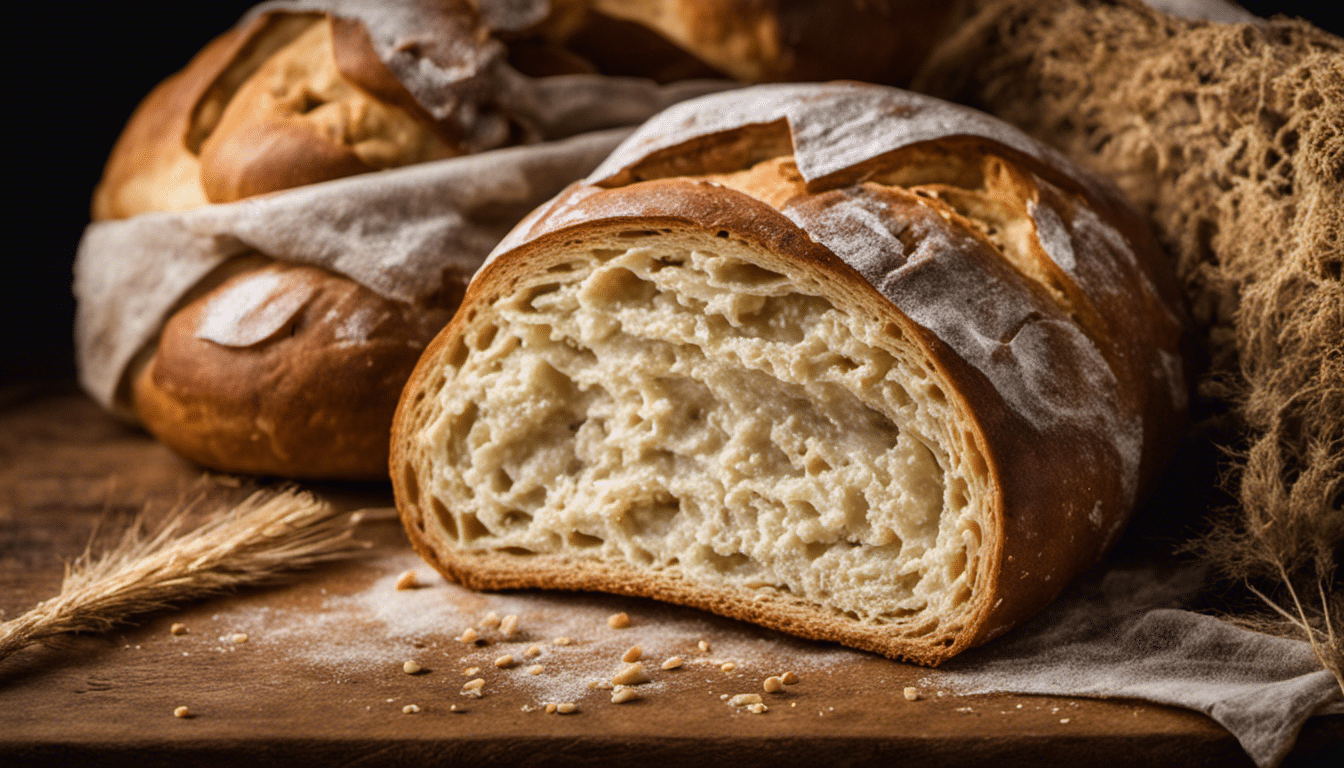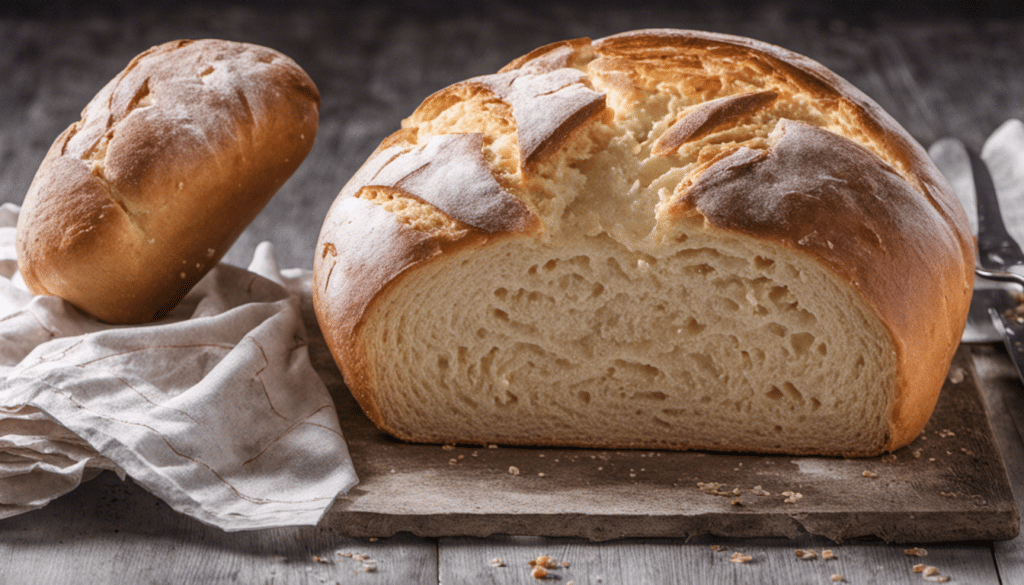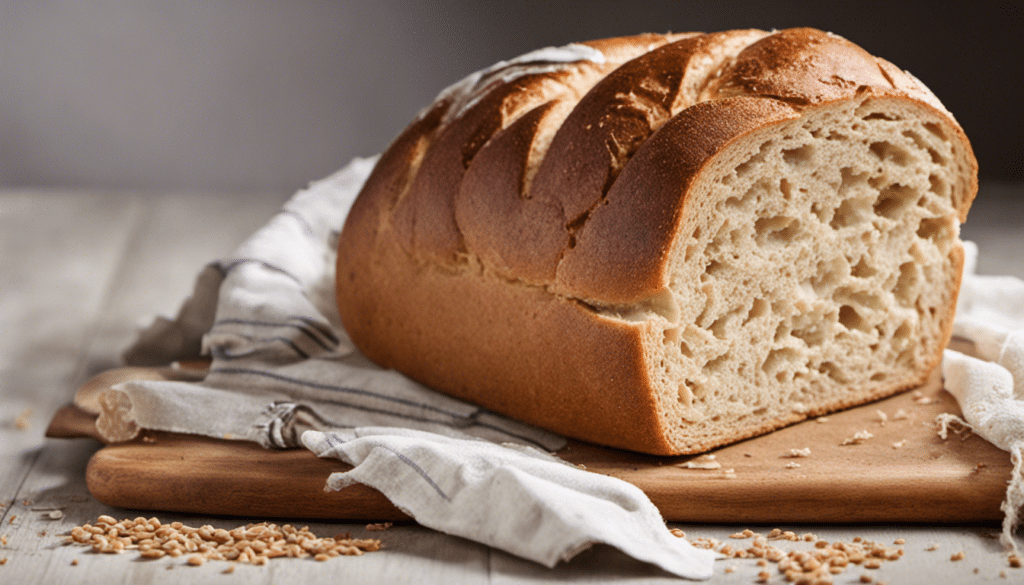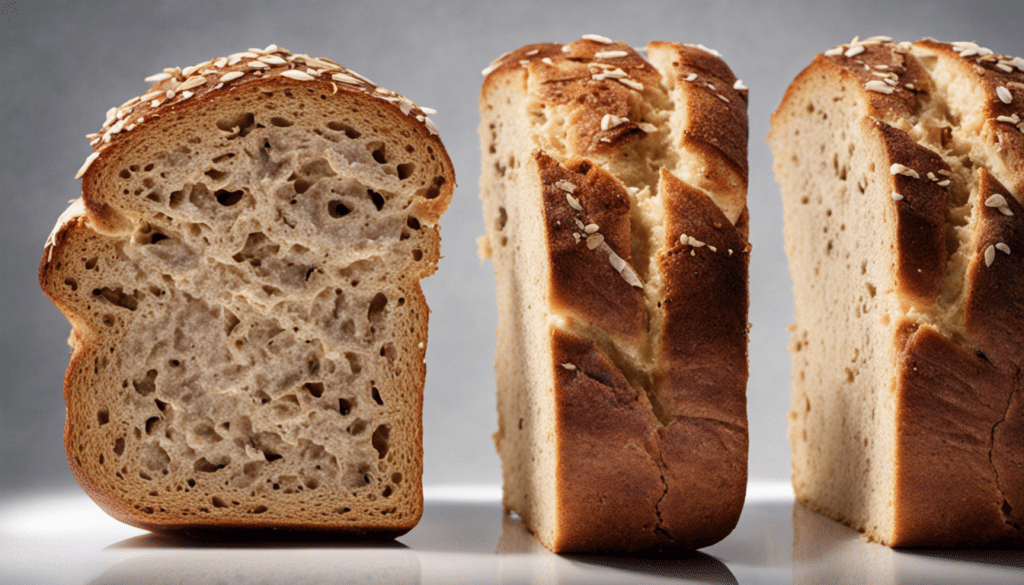| Prep: 15 mins | Cook: 25 mins | Difficulty: Medium | Serves: 6 |
| kcal | fat | saturates | carbs |
| 200 | 1g | 0g | 40g |
| sugars | fibre | protein | salt |
| 0g | 2g | 6g | 0.4g |
About Sacramental Bread
We invite you on a fascinating journey led by the taste and aroma of Sacramental Bread. This ancient bread, also known as the Eucharist, is a true testament to the rich tradition and deep spiritual symbolism that underlines its existence. The simple ingredients and preparation method stand in stark contrast with its profound historical and religious significance.
Understanding Sacramental Bread
A staple in numerous religious ceremonies, Sacramental Bread dates back to the Last Supper. It’s an unleavened bread, which means it does not include any fermenting agents. This creates a dense, matzo-like texture. Its shaping can range from modest circular forms to elaborate symbols.
Due to its religious significance, the bread is often consumed as is, alongside wine. However, its flavour and texture make it a versatile companion to a variety of dishes, notably soups and salads.
Ingredients and Preparation
The simplicity of Sacramental Bread lies not just in its elemental ingredients – namely all-purpose flour, warm water, active dry yeast, salt, and olive oil – but also in the process through which these ingredients are combined. The transformation that occurs is a beautiful representation of the unification of the body and spirit.
You can find easy-to-follow instructions on how to make this bread at home on websites like AllRecipes and Epicurious. It could be a peaceful, relative activity that also offers a dose of historical insight. Remember to check out the specific rules and customs related to the bread from various traditions.
Complementing Dishes with Sacramental Bread
The subtle, almost rustic taste of this bread makes it a perfect ally for bringing out the flavors of many different meals. Our gastronomic round-the-world journey takes us to the savory soups of eastern Europe, where a slice of Sacramental Bread adds a delightful crunch to the meal. Further afield, in the Mediterranean, a freshly baked loaf finds its place alongside olive oil, a few leaves of aromatic basil and ripe tomatoes, creating a heartier, more appetizing version of the ubiquitous Bruschetta.
All in all, Sacramental Bread is not just a form of sustenance, but a conduit to an experience that evokes tradition, faith, and a sense of unity among all who partake in it. We encourage culinary explorers around the globe to immerse themselves in the humble allure of this unique bread.
What You’ll Need
- 4 cups all-purpose flour
- 1 1/2 cups warm water
- 1 tablespoon active dry yeast
- 1 teaspoon salt
- 1 tablespoon olive oil
Method
Step One
Start by dissolving the active dry yeast in the warm water. Keep it aside and give it about five minutes to activate.
Step Two
In a large mixing bowl combine all-purpose flour and salt. Mix them together until they are well integrated.
Step Three
Pour the yeast mixture into the flour. Next, add the olive oil. Using a dough hook, mix these ingredients together until a dough begins to form. You can also use your hands to mix the dough if you do not have a dough hook.
Step Four
Once your dough has formed, transfer it onto a floured surface. Knead the dough well for about 10 minutes, or until it becomes smooth and elastic.
Step Five
Place the kneaded dough back into the mixing bowl, cover the bowl with a clean dish towel and place in a warm area to rise. Allow the dough to rise for about one hour, or until it has doubled in size.
Step Six
After the dough has risen, preheat your oven to 375 degrees F (190 degrees C). Onto a baking sheet, form the dough into a round loaf shape. Place this into the preheated oven and bake for about 40 minutes, or until the bread is golden brown.
Step Seven
Let the bread cool before slicing. Your Sacramental Bread is now ready to be served!




